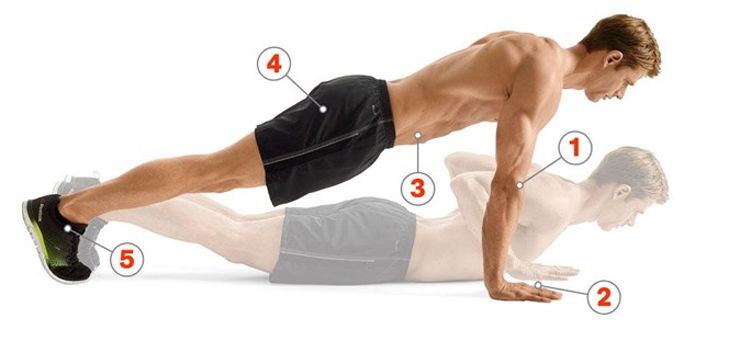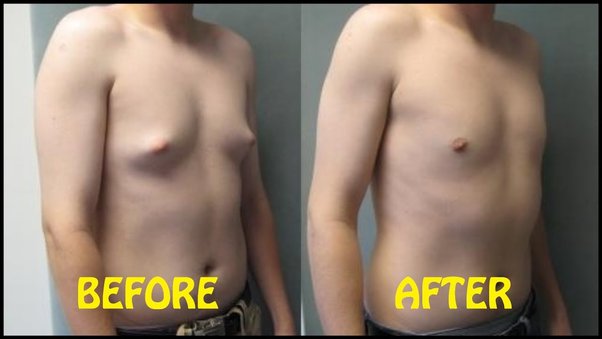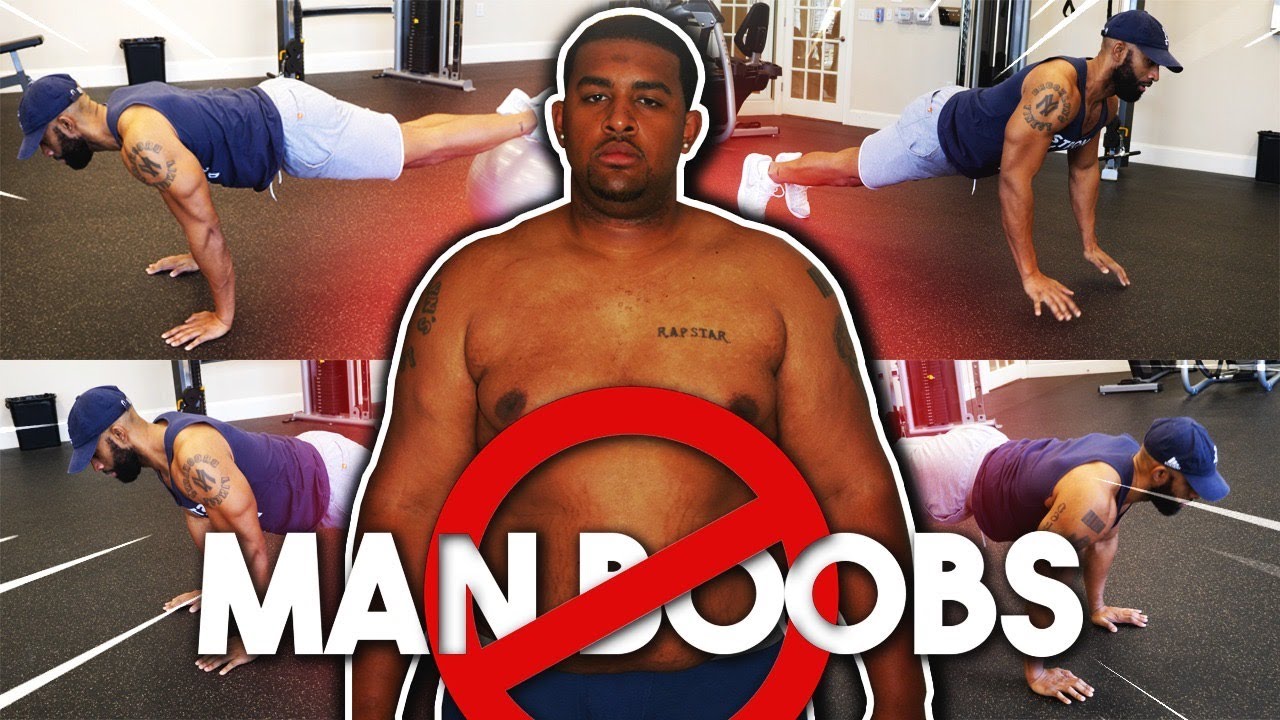Man boobs, medically termed as “gynecomastia” is a common concern among many men. This condition, characterized by the enlargement of breast tissue in males, can arise from various causes and can carry both physical and emotional implications.
Many affected individuals seek solutions to reduce the appearance of man boobs, hoping to achieve a firmer and flatter chest. Among the myriad of proposed solutions, a simple bodyweight exercise, the push-up, often stands out. It’s non-evasive, requires no equipment, and can be done anywhere. But do push-ups genuinely help in combating man boobs?
In this article, we will decipher the mechanics and benefits of push ups, and critically assess their effectiveness as a remedy for man boobs. Moreover, we will explore other complementary strategies that could be combined with push-ups for those seeking a comprehensive approach to addressing this concern.
So, whether you’re someone affected by this condition or a fitness enthusiast looking to broaden your understanding, read on!
The Science Behind Push Ups
Push-ups have long been regarded as a foundational exercise in many fitness routines. Not only are they versatile, requiring no special equipment and offering numerous variations, but they also provide a plethora of benefits that go beyond mere aesthetics.
Recommended: Does Drinking Milk Give You Man Boobs?
To understand how push-ups might affect the appearance of man boobs, it’s essential to delve into the mechanics of this exercise and the muscles it engages.
Mechanics of a push up
Push-ups are a compound movement, meaning they recruit multiple muscle groups to execute the motion. When you lower your body towards the ground and then push yourself back up, you’re working against gravity using your body weight, providing resistance.
- Range of Motion: During a push-up, your arms move from a fully extended position to a bent position, working primarily the elbow and shoulder joints.
- Stabilization: Your core, including muscles like the rectus abdominis and obliques, works overtime to stabilize your body throughout the movement, promoting a straight and rigid body line.
Muscles targeted during push ups
Push-ups primarily target the following muscles:
- Pectoralis Major: This is the large muscle group in the chest, responsible for the majority of chest mass. It’s activated when you push yourself up from the ground.
- Triceps Brachii: Located at the back of the upper arm, this muscle helps extend the elbow, playing a vital role in the lifting phase of the push-up.
- Anterior Deltoid: The front part of the shoulder is also engaged, especially during the lowering phase.
- Core Muscles: As mentioned, the rectus abdominis, obliques, and even the serratus anterior (located on your rib cage’s side) are activated to stabilize the body.
Recommended: What Can I Drink To Lose Belly Fat While Breastfeeding?
The benefits of push ups beyond chest strengthening
While the primary focus for our discussion is the chest, push-ups offer a myriad of other benefits:
- Full Body Activation: Engaging multiple muscle groups leads to higher calorie burns during the workout.
- Improved Muscle Tone: Regular push-ups can lead to better muscle definition, not just in the chest but also in the arms, shoulders, and core.
- Increased Bone Density: Like other weight-bearing exercises, push-ups can help in increasing bone density, reducing the risk of osteoporosis.
- Enhanced Cardiovascular Health: With multiple large muscles at work, the heart has to pump more blood, giving it a mini cardiovascular workout.

Push Ups and Their Impact on Man Boobs
Push-ups have been lauded for their myriad benefits, from toning muscles to enhancing overall physical stamina. But when it comes to addressing the specific concern of man boobs, it’s important to understand the potential benefits and limitations of this exercise.
Here, we break down how push-ups can help and where they might fall short:
How push ups can help pseudogynecomastia
- Burning Calories: Push-ups, being a compound movement, involve multiple muscle groups. This means that performing them burns more calories than isolated exercises, which can assist in overall fat loss when combined with a calorie-deficit diet.
- Toning and Firming the Chest Area: Regular push-ups can help in strengthening and toning the pectoral muscles. When the underlying muscles are firmer and more defined, the overlying fat (if any remains) may appear less prominent, leading to a more sculpted appearance.
Recommended: Buccal Fat Reduction: Cost, Safety, Eligibility And Recovery
Push ups and true gynecomastia
- Muscular Development vs. Glandular Tissue: While push-ups can develop the chest muscles, they won’t directly impact glandular tissue responsible for true gynecomastia. No amount of exercise can reduce this glandular tissue; medical interventions might be required for that.
- Improved Appearance: That said, a well-developed chest can sometimes make the appearance of gynecomastia less noticeable. Strengthened pectoral muscles can offer a firmer foundation, potentially changing the chest’s contour even with the presence of glandular tissue.
The importance of a holistic approach
- Targeted Fat Loss – A Myth: It’s essential to note that one cannot target fat loss in a specific area (spot reduction). While push-ups can tone the chest, they cannot selectively burn fat from the chest area. For overall fat reduction, a combination of cardiovascular exercises, strength training, and a balanced diet is crucial.
- Balanced Workouts: Relying solely on push-ups might lead to an imbalance in muscle development. Incorporating other exercises, like pull-ups or rows, ensures that the back muscles develop in tandem with the chest, promoting better posture and overall balance.
- Consistency is Key: As with any fitness goal, consistency is crucial. Intermittent workouts might not yield desired results. It’s important to maintain a regular routine, gradually increasing intensity and ensuring rest and recovery.
Other Effective Strategies to Combat Man Boobs
Man boobs, whether arising from excess fat (pseudogynecomastia) or glandular tissue growth (true gynecomastia), can be a point of self-consciousness for many men.
While push-ups offer a beneficial and non-invasive approach to address the condition, there are several other effective strategies worth considering to achieve comprehensive and lasting results. Here’s a breakdown of these alternatives.
1. Cardiovascular exercises
- Aerobic Workouts: Engaging in aerobic exercises, such as running, swimming, cycling, or skipping, can help increase heart rate, promoting calorie burn and fat loss. Shedding overall body fat can lead to a reduction in chest fat over time.
- High-Intensity Interval Training (HIIT): This approach alternates between short bursts of high-intensity exercises and low-intensity recovery periods. HIIT has been shown to burn calories effectively and boost metabolism.
2. Strength training
- Bench Press: A foundational chest exercise, the bench press targets the overall pectoral muscles and can be modified (incline or decline) to focus on specific sections of the chest.
- Dumbbell Flyes: This exercise isolates the chest muscles, especially when performed on an incline, decline, or flat bench.
- Cable Crossovers: Useful for sculpting the chest, cable crossovers provide consistent resistance throughout the movement.
3. Dietary changes
- Caloric Intake: For those looking to lose weight, maintaining a calorie deficit (burning more calories than consumed) is crucial. This often requires a combination of increased physical activity and dietary adjustments.
- Nutrient Balance: Focus on a diet rich in lean proteins, complex carbohydrates, healthy fats, and plenty of vegetables. This ensures the body gets the necessary nutrients for muscle growth and recovery while managing weight.
- Limiting Processed Foods: Cutting down on sugary beverages, processed snacks, and unhealthy fats can make a significant difference in weight and overall health.
4. Medical interventions
- Consultation: If gynecomastia persists despite fitness and dietary efforts, consulting with a healthcare professional is essential. They can offer insights into potential underlying causes.
- Hormone Therapy: In some cases, hormonal imbalances might be the cause of gynecomastia. Hormone therapy can be an option, but it’s essential to understand potential side effects.
- Surgery: For persistent gynecomastia, especially if caused by glandular tissue growth, surgical reduction might be the most effective solution. This should be considered a last resort and pursued only after thorough consultation with a medical professional.
Recommended: Is It Normal To Have Hormonal Imbalance?
By incorporating a combination of these strategies, those concerned about man boobs can take a proactive and multifaceted approach. This not only helps in addressing the specific concern but also contributes to overall physical health and well-being.

Tips to Incorporate Push Ups Effectively in Your Routine
The push-up, simple as it may seem, is a versatile and effective exercise when done right. However, without the correct technique and approach, its benefits can be undermined, or worse, lead to potential injuries.
Here’s how to incorporate push-ups into your routine effectively, ensuring you get the most out of this classic exercise.
1. Proper form and technique
- Hand Placement: Position your hands slightly wider than shoulder-width apart. This engages the chest muscles optimally.
- Body Alignment: Maintain a straight line from your head to your heels. This ensures that the core is engaged and reduces stress on the lower back.
- Depth and Range: Lower your body until the chest is just a few inches from the ground, then push up to a full extension. This full range of motion ensures maximum muscle engagement.
- Breathing: Inhale as you lower down and exhale as you push up. Proper breathing supports muscular endurance and maintains blood pressure.
2. Incorporating variations
- Incline Push Ups: By placing your hands on an elevated surface (like a bench), you target the lower part of the chest more.
- Decline Push Ups: With your feet elevated, the focus shifts to the upper pectoral muscles.
- Diamond Push Ups: By placing your hands close together, forming a diamond shape with your thumbs and index fingers, you target the triceps and the inner chest more.
- Wide Push Ups: A wider hand placement puts more emphasis on the outer part of the pectoral muscles.
3. Setting a consistent routine
- Frequency: For beginners, starting with 2-3 sets of push-ups every other day allows the muscles to recover and adapt. Over time, you can increase the frequency and volume.
- Progressive Overload: As you become more proficient, challenge yourself by increasing the number of repetitions, adding variations, or incorporating weights (like wearing a weighted vest).
- Rest and Recovery: Muscles grow and repair during rest periods. Ensure you’re giving your body adequate time to recover, especially if you’re engaging in intense push-up sessions.
4. Tracking progress and staying motivated
- Journaling: Keep a workout journal to track the number of repetitions, sets, and variations. This not only helps in gauging progress but also in setting new goals.
- Visual Progress: Take periodic photos to visually assess changes in your chest and upper body. Over time, this can serve as a motivation booster.
- Join a Group or Challenge: Engage in community challenges or workout groups that focus on push-ups. The camaraderie and shared goals can be excellent motivators.
Recommended: Can Alcohol Cause Hormonal Imbalance?
Incorporating push ups effectively into a routine is about more than just the exercise itself. It’s about understanding one’s body, setting realistic goals, and maintaining consistency. By following these tips, you’re setting yourself up for success, ensuring that push ups become a beneficial and enduring part of your fitness journey.
Conclusion
Push ups, while a seemingly simple exercise, offer profound benefits for the chest and overall upper body. Their potential in addressing concerns like man boobs, especially pseudogynecomastia, is undeniable when combined with a holistic approach involving diet, cardiovascular activity, and strength training.
However, setting realistic expectations is crucial. For those with true gynecomastia, medical consultation remains paramount. Ultimately, the journey to a firmer and flatter chest is a combination of consistent effort, informed choices, and perseverance. Embrace the process, stay informed, and remain proactive in your fitness endeavors.
